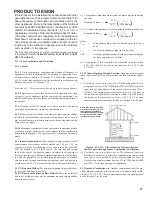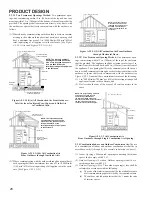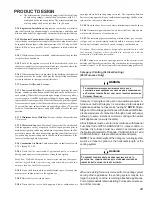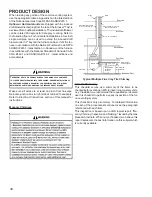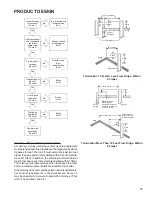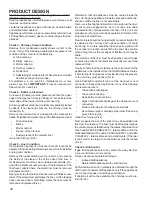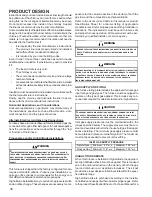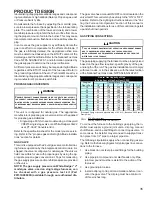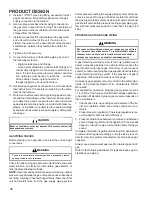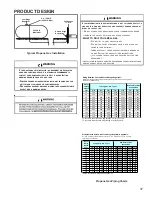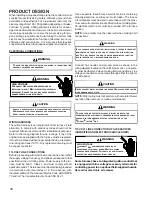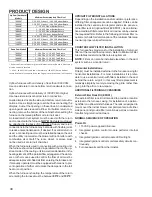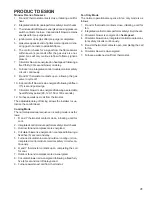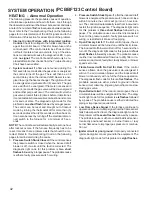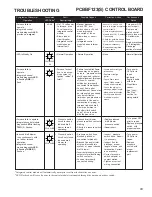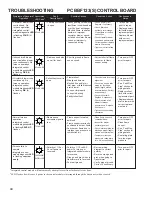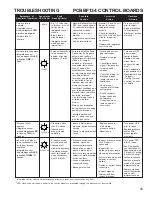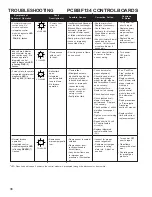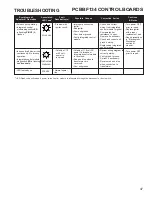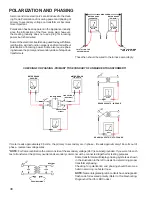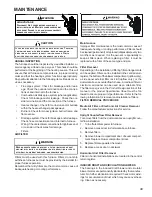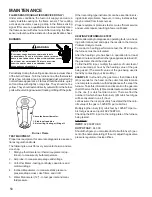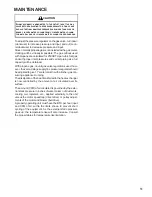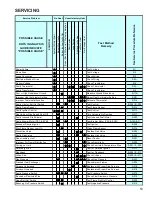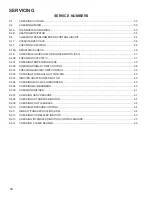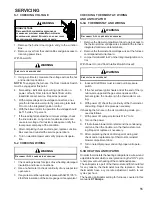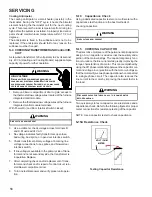
PRODUCT DESIGN
41
N
ORMAL
H
EATING
S
EQUENCE
1. R and W thermostat contacts close, initiating a call for
heat.
2. Integrated control module performs safety circuit checks.
3. The induced draft blower is energized causing pressure
switch contacts to close. Induced draft blower remains
energized for pre-purge period.
4. Ignitor warm up begins after pre-purge is completed.
5. Gas valve opens at end of ignitor warm up period, deliv-
ering gas to burners to establish flame.
6. The control checks for a signal from the flame sensor
within seven (4) seconds after the gas valve is ener-
gized. Gas will only continue to flow if a flame signal is
present.
7. Circulator blower is energized on heat speed following a
fixed thirty (30) second blower on delay.
8. Furnace runs, integrated control module monitors safety
circuits continously.
9. R and W thermostat contacts open, allowing the gas
valve to cycle off.
10. Induced draft blower is de-energized following a fifteen
(15) -second post purge.
11. Circulator blower is de-energized following a selectable
heat off delay period (90, 120, 150 or 180 seconds).
12. Furnace awaits next call from thermostat.
The adjustable delay-off timing allows the installer to cus-
tomize the comfort level.
Cooling Mode
The normal operational sequence in cooling mode is as fol-
lows:
1. R and Y thermostat contacts close, initiating a call for
cool.
2. Integrated control module performs safety circuit checks.
3. Outdoor fan and compressor are energized.
4. Circulator blower is energized on cool speed following a
fixed five (5) second on delay.
5. Furnace circulator blower and outdoor cooling unit run,
integrated control module monitors safety circuits con-
tinuously.
6. R and Y thermostat contacts open, completing the call
for cool.
7. Outdoor fan and compressor are de-energized.
8. Circulator blower is de-energized following a fixed forty
five (45) second cool off delay period.
9. Furnace awaits next call from thermostat.
Fan Only Mode
The normal operational sequence in fan only mode is as
follows:
1. R and G thermostat contacts close, initiating a call for
fan.
2. Integrated control module performs safety circuit checks.
3. Circulator blower is energized on
heat speed
.
4. Circulator blower runs, integrated control module moni-
tors safety circuits continuously.
5. R and G thermostat contacts open, completing the call
for fan.
6. Circulator blower is de-energized.
7. Furnace awaits next call from thermostat.

